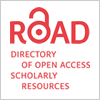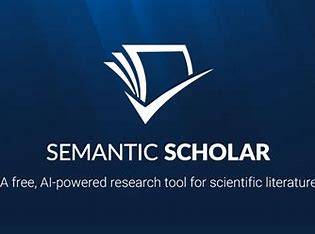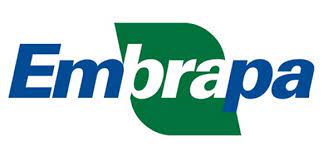AUGMENTED REALITY AS A LEARNING OBJECT: USE OF THE SOLIDOS RA APPLICATION AS A SUPPORT TOOL IN THE TEACHING AND LEARNING PROCESS
DOI:
https://doi.org/10.47820/recima21.v4i8.3718Keywords:
Reality (AR) in the teaching-learning process of geometricAbstract
This article aims to show the integration of Augmented Reality (AR) in the teaching-learning process of geometric solids in High School. Therefore, AR as a technological and playful resource can help in this interaction by generating understanding of theoretical concepts. Because there are many factors that hinder learning in Mathematics teaching, lack of perception, clarity and interpretation of concepts and measures. The main objective is to present a didactic way to overcome these problems with AR. Therefore, the use of the Solid AR Augmented Reality Application in the teaching-learning process proved to be very efficient, making students actively participate in Mathematics classes and proposed activities in the classroom. Based on the BNCC (Base Nacional Comum Curricular) and Lei de Diretrizes e Bases da Educação (LDB) that govern education and address the use of technology in the educational context. The teacher, as a knowledge mediator, can insert the use of technologies in his teaching methodology, work with students on the resources present in education to promote learning, since students currently have access to technology and together with teachers there will be a transmission and exchange of knowledge by both parties.
Downloads
References
ALMEIDA, Mateus,L de; SANTOS, Gesinaldo. Realidade Aumentada na Educação. ANAMI, Beatriz Miho. Boas práticas de realidade aumentada aplicada à educação (Universidade Estadual de Londrina),2013.Disponível em: <http://www.uel.br/cce/dc/wp- content/uploads/TCC-BeatrizAnami-BCC-UEL-2013.pdf>. Acesso em 06 de julho de2020.
ANDRADE, Vinicius Gouveia de. O desenvolvimento do aplicativo ra.geo: contribuições da realidade aumentada para o ensino de geometria espacial.
AZUMA, Ronald (1997). A Survey of Augmented Reality. Presence. Vol. 6, pp. 355-385
BOALER, Jo et al. Seeing as understanding: The importance of visual mathematics for our brain and learning. Journal of Applied & Computational Mathematics, v. 5, n. 5, p. 1-6, 2016.
BRASIL. Base Nacional Comum Curricular. Brasília: MEC, 2017.
BRASIL. Lei de Diretrizes e Bases da Educação Nacional, LDB. 9394/1996.BRASIL
DE CASTRO, Thomas Selau; KAMPFF, Adriana Justin Cerveira. Realidade Aumentada na Educação: algumas reflexões. Recursos digitais na escola, 2021.
DEMO, Pedro. TICs e educação,2008 http://www.pedrodemo.sites.uol.com.br acesso em 12 de outubro.
Disponível em: http://tecedu.pro.br/wp-content/uploads/2015/07/Art2-vol12- julho2015.pdf. Acesso em 07 de julho de2020.
FEITOSA, Rosane Rodrigues; Aita, Keylla M. de S. U.; Silva, Aline M. L. Principais Desafios para a Inclusão dos Docentes da Rede Pública no Contexto das Tecnologias da Informação e Comunicação. VIII CBIE,2019. XXV Workshop de Informática na Escola, 2019.
GUTIÉRREZ, Angel et al. Visualization in 3-dimensional geometry: In search of a framework. In: Pme Conference. THE PROGRAM COMMITTEE OF THE 18TH PME CONFERENCE, 1996. p. 1-3.
MORAES, Carolina Roberta; VARELA, Simone. 2007. Motivação do aluno durante o processo de ensino-aprendizagem. 2007.
KENSKI, VANI MOREIRA. Educação e tecnologias: o no ritmo da informação. Campinas: Papirus, 2008.
KINER,Cláudio; TORI, Romero. Fundamentos de Realidade Aumentada. In: TORI, Romero; KIRNER, Cláudio; SISCOUTTO, Robson.Fundamentos e Tecnologia de Realidade Virtual e Aumentada. Belém:Editora SBC,2006. Cap.2,p.29-45. Acesso em julho de2020.
MEDEIROS et al. A Atenção Vonluntária na Construção de Conceitos Trigonométricos em Ambientes de Geometria Dinâmica. RBIE V.25, N.1-2017.
MORAES, C. R.; VARELA, S. Motivação do aluno durante o processo de ensino- aprendizagem. Revista eletrônica de Educação, v. 1, n. 1, p. 1–15, 2007.
PALHANO, Maicon G. O.; Oliveira, Fabiane de; Grossi, Luciane. A Realidade Aumentada no Ensino de Sólidos Geométricos. VIII CBIE,2019. XXX Simpósio Brasileiro de Informática na Educação (SBIE 2019).
ROMERO Tori, Claudio Kirner, Robson Siscoutto.Fundamentos e Tecnologia de Realidade Virtual e Aumentada. Editora SBC – Sociedade Brasileira de Computação, Porto Alegre, 2006.
Downloads
Published
How to Cite
License
Copyright (c) 2023 RECIMA21 - Revista Científica Multidisciplinar - ISSN 2675-6218

This work is licensed under a Creative Commons Attribution 4.0 International License.
Os direitos autorais dos artigos/resenhas/TCCs publicados pertecem à revista RECIMA21, e seguem o padrão Creative Commons (CC BY 4.0), permitindo a cópia ou reprodução, desde que cite a fonte e respeite os direitos dos autores e contenham menção aos mesmos nos créditos. Toda e qualquer obra publicada na revista, seu conteúdo é de responsabilidade dos autores, cabendo a RECIMA21 apenas ser o veículo de divulgação, seguindo os padrões nacionais e internacionais de publicação.

 Clique para ver detalhes
Clique para ver detalhes 











